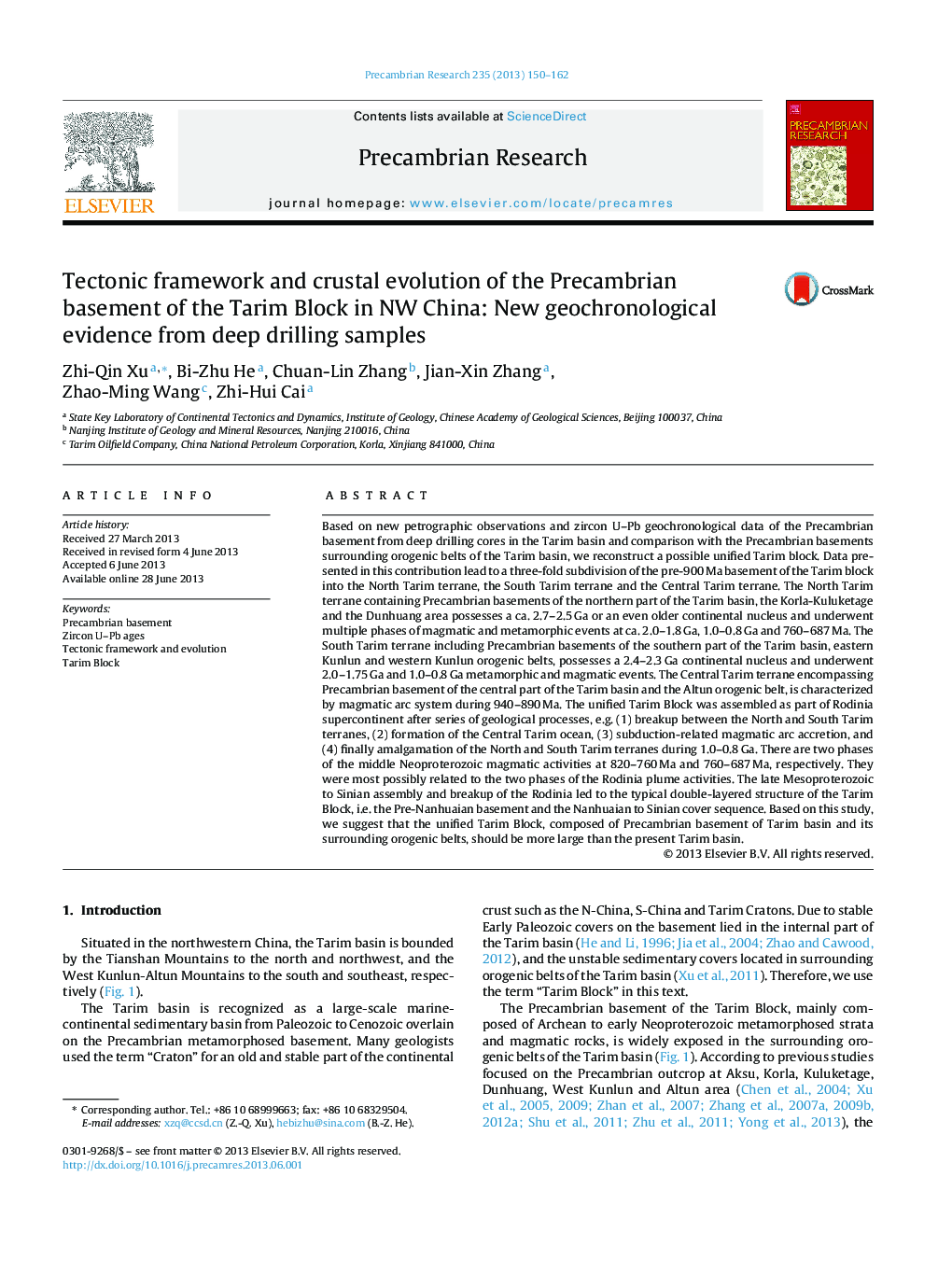| کد مقاله | کد نشریه | سال انتشار | مقاله انگلیسی | نسخه تمام متن |
|---|---|---|---|---|
| 4723147 | 1639639 | 2013 | 13 صفحه PDF | دانلود رایگان |
• The Precambrian basement tectonic frameworks of the Tarim block are reconstruction.
• The Tarim Block can be divided into three main tectonic units during 800–900 Ma.
• The unified Tarim Block should be more large than the present Tarim basin.
Based on new petrographic observations and zircon U–Pb geochronological data of the Precambrian basement from deep drilling cores in the Tarim basin and comparison with the Precambrian basements surrounding orogenic belts of the Tarim basin, we reconstruct a possible unified Tarim block. Data presented in this contribution lead to a three-fold subdivision of the pre-900 Ma basement of the Tarim block into the North Tarim terrane, the South Tarim terrane and the Central Tarim terrane. The North Tarim terrane containing Precambrian basements of the northern part of the Tarim basin, the Korla-Kuluketage and the Dunhuang area possesses a ca. 2.7–2.5 Ga or an even older continental nucleus and underwent multiple phases of magmatic and metamorphic events at ca. 2.0–1.8 Ga, 1.0–0.8 Ga and 760–687 Ma. The South Tarim terrane including Precambrian basements of the southern part of the Tarim basin, eastern Kunlun and western Kunlun orogenic belts, possesses a 2.4–2.3 Ga continental nucleus and underwent 2.0–1.75 Ga and 1.0–0.8 Ga metamorphic and magmatic events. The Central Tarim terrane encompassing Precambrian basement of the central part of the Tarim basin and the Altun orogenic belt, is characterized by magmatic arc system during 940–890 Ma. The unified Tarim Block was assembled as part of Rodinia supercontinent after series of geological processes, e.g. (1) breakup between the North and South Tarim terranes, (2) formation of the Central Tarim ocean, (3) subduction-related magmatic arc accretion, and (4) finally amalgamation of the North and South Tarim terranes during 1.0–0.8 Ga. There are two phases of the middle Neoproterozoic magmatic activities at 820–760 Ma and 760–687 Ma, respectively. They were most possibly related to the two phases of the Rodinia plume activities. The late Mesoproterozoic to Sinian assembly and breakup of the Rodinia led to the typical double-layered structure of the Tarim Block, i.e. the Pre-Nanhuaian basement and the Nanhuaian to Sinian cover sequence. Based on this study, we suggest that the unified Tarim Block, composed of Precambrian basement of Tarim basin and its surrounding orogenic belts, should be more large than the present Tarim basin.
Journal: Precambrian Research - Volume 235, September 2013, Pages 150–162
